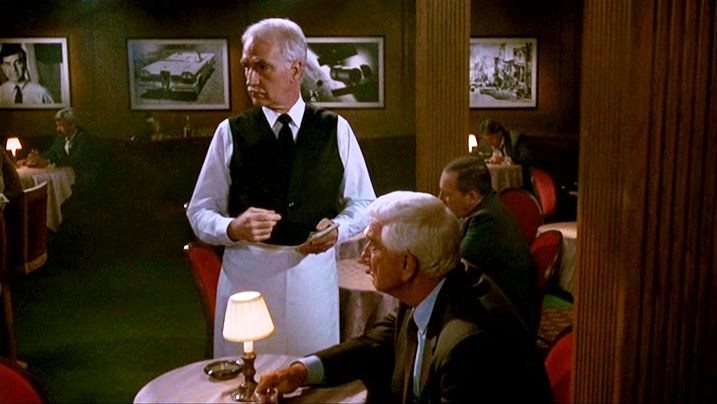Bottom of the range: Difference between revisions
Amwelladmin (talk | contribs) (Created page with "{{disaster cafe}}{{d|Bottom of the range|/ˈbɒtəm ɒv ðə reɪnʤ/|n}}All other things being equal, a dangerous place to play. We have looked elsewhere at the travails of [...") |
Amwelladmin (talk | contribs) No edit summary |
||
| Line 1: | Line 1: | ||
{{disaster cafe}}{{d|Bottom of the range|/ˈbɒtəm ɒv ðə reɪnʤ/|n}}All other things being equal, a dangerous place to play. We have looked elsewhere at the travails of [[Melvin Capital Management LP]] when it tried to short [[GameStop]], but this points to a general proposition: if your strategy involves prices staying low, or going lower, your arse is hanging out if you invest at the “bottom of the range” of plausible prices. | {{a|disaster|{{image|disaster cafe|jpg}}{{image|GME|png}Ouch ouch ouch}}}}{{d|Bottom of the range|/ˈbɒtəm ɒv ðə reɪnʤ/|n}}All other things being equal, a dangerous place to play. We have looked elsewhere at the travails of [[Melvin Capital Management LP]] when it tried to short [[GameStop]], but this points to a general proposition: if your strategy involves prices staying low, or going lower, your arse is hanging out if you invest at the “bottom of the range” of plausible prices. | ||
===[[GameStop]] and the [[outsider trading|outsider traders]]=== | |||
An equity cannot have a negative value — not even one as ropey as [[GME]] — so there is a natural limit to how much you can make by shorting it: your purchase price. The lower that price, the less, in absolute dollars, you can make by shorting a single share (but the more shares you can afford to buy!!!). This is where the significance of the range comes in: if the stock is already low against its historical range, and low in absolute terms — as, by 2019, was [[GME]] — there is only so much further it can go: if Melvin put on its short at $1.00, it stood to gain at most $1 per share. But it is hardly outlandish to suppose a stock could return to points ''higher'' in its range: after all, it has been there before. The stock might ''seem'' in terminal decline, but look: things can change. Even without the mendacious activities of the Reddit [[outside trading|outside traders]], it wasn’t crazy that GME could go back to $15.00 per share. Even this kind of move would be crippling: Unlike a “long” position, a [[short sale]] ''requires'' you to borrow — not a fixed amount of cash, but ''the prevailing value of security you are shorting''. Since you don’t ''have'' that stock — you sold it short — if it rises, so will your [[margin]] obligation to your broker. You will have to fund that in cash. So a $1m investment in GME — promising a maximum $1m return — would require $15m of margin, if the stock rallied ''even to historical levels''. This is scary gearing for an uncertain future. | |||
By contrast, putting on a short position at $15 — a price at which GME had not exceeded in twenty years — gears things the other way. To lose just one times your investment, GME would need to go to $30. To lose 15 times, it would need to go to $225 — a seemingly outlandish price. Of course | |||
{{sa}} | {{sa}} | ||
*[[GameStop]] | *[[GameStop]] | ||
*[[Outside trading]] | |||
Revision as of 05:37, 15 August 2022
|
Chez Guevara — Dining in style at the Disaster Café™
|
Bottom of the range
/ˈbɒtəm ɒv ðə reɪnʤ/ (n.)
All other things being equal, a dangerous place to play. We have looked elsewhere at the travails of Melvin Capital Management LP when it tried to short GameStop, but this points to a general proposition: if your strategy involves prices staying low, or going lower, your arse is hanging out if you invest at the “bottom of the range” of plausible prices.
GameStop and the outsider traders
An equity cannot have a negative value — not even one as ropey as GME — so there is a natural limit to how much you can make by shorting it: your purchase price. The lower that price, the less, in absolute dollars, you can make by shorting a single share (but the more shares you can afford to buy!!!). This is where the significance of the range comes in: if the stock is already low against its historical range, and low in absolute terms — as, by 2019, was GME — there is only so much further it can go: if Melvin put on its short at $1.00, it stood to gain at most $1 per share. But it is hardly outlandish to suppose a stock could return to points higher in its range: after all, it has been there before. The stock might seem in terminal decline, but look: things can change. Even without the mendacious activities of the Reddit outside traders, it wasn’t crazy that GME could go back to $15.00 per share. Even this kind of move would be crippling: Unlike a “long” position, a short sale requires you to borrow — not a fixed amount of cash, but the prevailing value of security you are shorting. Since you don’t have that stock — you sold it short — if it rises, so will your margin obligation to your broker. You will have to fund that in cash. So a $1m investment in GME — promising a maximum $1m return — would require $15m of margin, if the stock rallied even to historical levels. This is scary gearing for an uncertain future.
By contrast, putting on a short position at $15 — a price at which GME had not exceeded in twenty years — gears things the other way. To lose just one times your investment, GME would need to go to $30. To lose 15 times, it would need to go to $225 — a seemingly outlandish price. Of course
